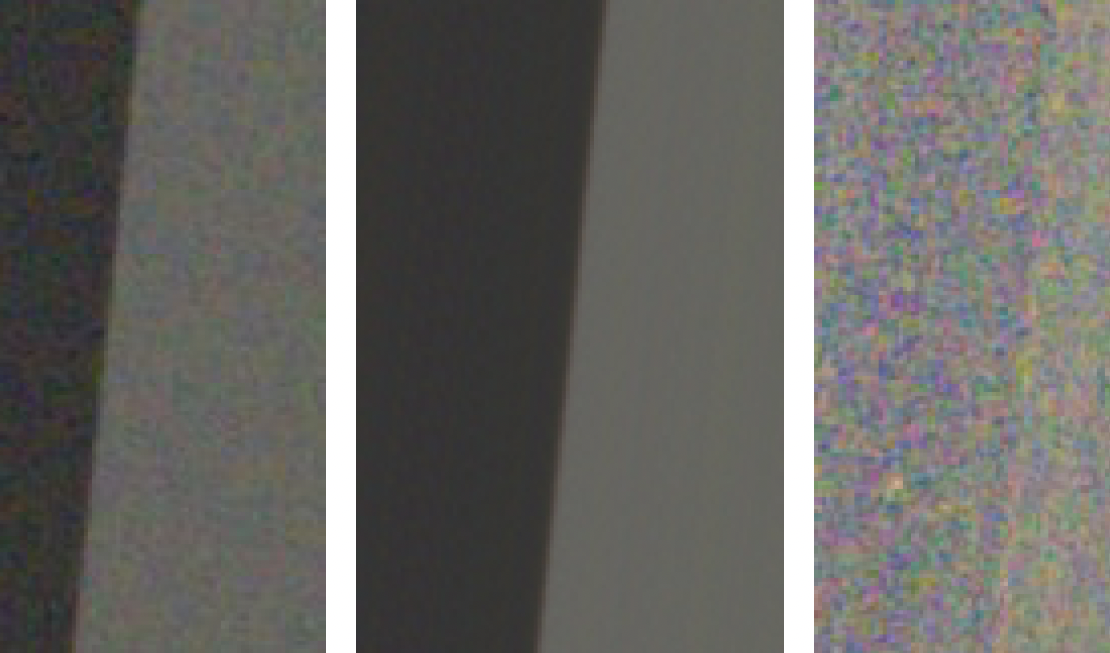
We present a comprehensive framework for conveniently measuring camera information capacity and related performance metrics from the widely used slanted-edge (e-SFR) test pattern. The goal of this work is to develop a set of image quality metrics that can predict the performance of Machine Vision (MV) and Artificial Intelligence (AI) systems, assist with camera selection, and use for designing electronic filters to optimize system performance. The new methods go far beyond the standard approach of estimating system performance based on sharpness and noise (or Signal-to-Noise Ratio) which often involves more art than science. Metrics include Noise Power Spectrum (NPS), Noise Equivalent Quanta (NEQ), and two metrics that quantify the detectability of objects and edges: Independent Observer Signal-to-Noise Ratio, SNRi, and Edge SNRi. We show how to use these metrics to design electronic filters that optimize object and edge detection performance. The new measurements can be used to solve several problems, including finding a camera that meets performance requirements with a minimum number of pixels important because fewer pixels mean faster processing and lower energy consumption as well as lower cost.

As Machine Vision (MV) and Artificial Intelligence (AI) systems are incorporated to an ever-increasing range of imaging applications, there is a corresponding need for camera measurements that can accurately predict the performance of these systems. At the present time, the standard practice is to separately measure the two major factors, sharpness and noise (or Signal-to-Noise Ratio), along with several additional factors, then to estimate system performance based on a combination of these factors. This estimate is usually based on experience, and is often more of an art than a science. Camera information capacity (C), based on Claude Shannon's ground-breaking work on information theory, holds great promise as a figure of merit for a variety of imaging systems, but it has traditionally been difficult to measure. We describe a new method for measuring camera information capacity that uses the popular slanted-edge test pattern, specified by the ISO 12233:2014/2017 standard. Measuring information capacity requires no extra effort: it essentially comes for free with slanted-edge MTF measurements. C has units of bits per pixel or bits per image for a specified ISO speed and chart contrast, making it easy to compare very different cameras. The new measurement can be used to solve some important problems, such as finding a camera that meets information capacity requirements with a minimum number of pixels, important because fewer pixels mean faster processing as well as lower cost.

In factories, automatic inspection is performed using images that are acquired using industrial cameras. In these industrial cameras, lenses with various focal lengths are used according to their intended purposes. It is important that the optical systems of industrial cameras have small outer diameters, close minimum object distances and high resolution. In an optical system with a long focal length, the movement of the moving group increases during focusing, and this movement makes it difficult to reduce the minimum object distance. In addition, to achieve higher resolution, it is important to suppress the degradation that occurs because of machining errors or assembly errors. To solve these problems, we developed a floating focus system in which the diaphragm is fixed, and we introduced a moving group that is held using a helicoid and a fitting structure.

Remote operation of robot manipulators plays a crucial role in various safety-critical application areas such as forestry, mining, surveillance, etc. The capture and display of visual information of the real operation environment in an information-rich way is one of the key factors in achieving effective and robust teleoperation capability. In this paper, through subjective experiments, we comparatively investigate the roles of monocular, i.e. 2D, and stereo capture and display systems in the context of teleoperation of a robot arm. In particular, the positioning task is considered and, for both monocular and stereoscopic cases, two different modes of capture are implemented, which are static capture setup separately located from the robot arm and dynamic capture setup positioned at the tip of the robot arm. The experiments, conducted on 10 subjects (aged 24-33), show that stereo vision systems enable significant increase in accuracy of positioning compared to conventional 2D capture and display cases. In average, the tasks are completed with highest accuracy in the case of dynamic stereo capture setup.